
PLAYER ONE Apollo-M Max Solar Camera USB3.0 Mono Camera (IMX432)
focus on the solar image!
The Apollo series is the world's first line of cameras designed specifically for solar photography, bearing the Apollo name.
The Apollo series features Sony sensors with global shutters and a focus on monochrome sensors.
| Carrier | Description | Estimated Delivery | ||
|---|---|---|---|---|
 |
Home delivery - International | Home delivery - International |
Thursday, 8 May - Thursday, 15 May |
|

Home delivery - International
Home delivery - International
Estimated delivery:
Thursday, 8 May - Thursday, 15 May
PLAYER ONE Apollo-M Max Solar Camera USB3.0 Mono Camera (IMX432)
The Apollo series is the world's first line of cameras designed specifically for solar photography, bearing the Apollo name.
The Apollo series features Sony sensors with global shutters and a focus on monochrome sensors.
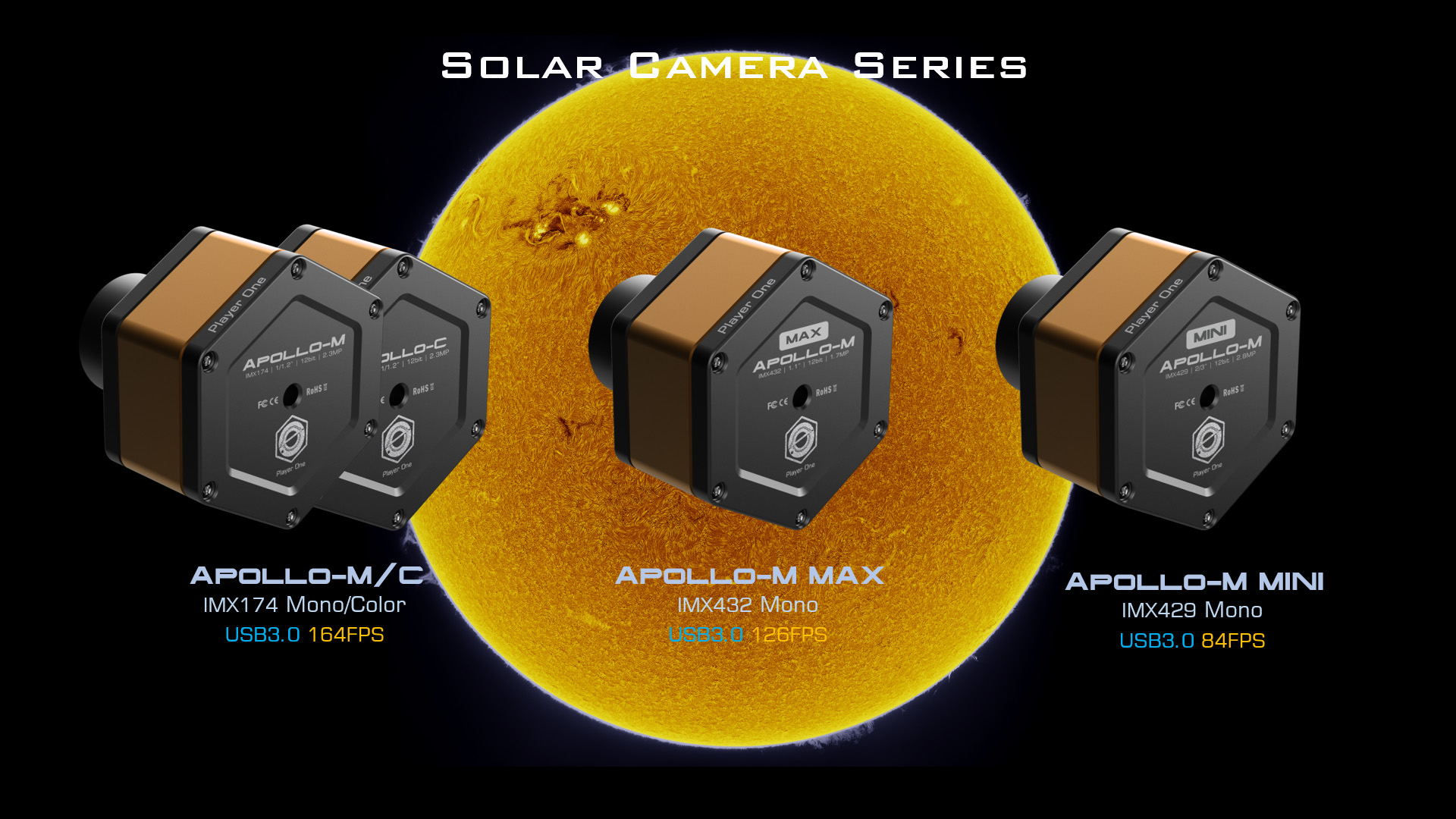
Now, 4 models of Apollo cameras are launched:
Apollo-M MAX (IMX432), 1.1-inch sensor, monochrome.
Apollo-M MINI (IMX429), 2/3-inch, monochrome sensor.
Apollo-M (IMX174), 1/1.2-inch sensor, monochrome.
Apollo-C (IMX174) , 1/1.2-inch sensor, color.
* Note: The solar camera requires an energy-reducing and light-reducing filter, such as Baader film or Herschel prism. Please DO NOT use it directly to obtain images of the Sun.
Product description
Apollo-M MAX is a solar camera developed by Player One Astronomy, which adopts the 1.1" Sony IMX432 format monochrome sensor. The pixel size of 9um allows a well depth of 100ke with a total of 1.7MP (resolution is 1608*1104), and the diagonal is 17.5mm.

Pregius Technology
Apollo-M MAX (IMX432) is based on the third generation of Pregius. But IMX432 is quite different. According to the introduction of the technical documents, the pixel size of the 3rd Gen is usually 4.5um, and the full well is 25Ke. But this sensor has 9um pixels, and of course the full well up to 4x (100Ke).
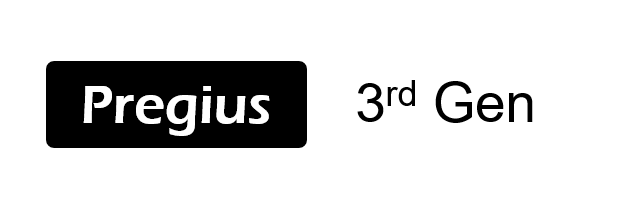
Format
Apollo-M MAX (IMX432) has a 1.1″ form factor, it is quite large, almost twice the size of the IMX174 chip.

Pixel size
The 9um pixel size is 1.5 times larger than the IMX174 camera, which means it can work with a longer focal ratio, such as SCT + Daystar filter (with 4.2X).

Full well
The full 100Ke well is 3 times larger than that of the IMX174. This feature will bring new possibilities in imaging. What we can imagine is HDR of the Sun and prominence, or perhaps the bright and dark side of the Moon.
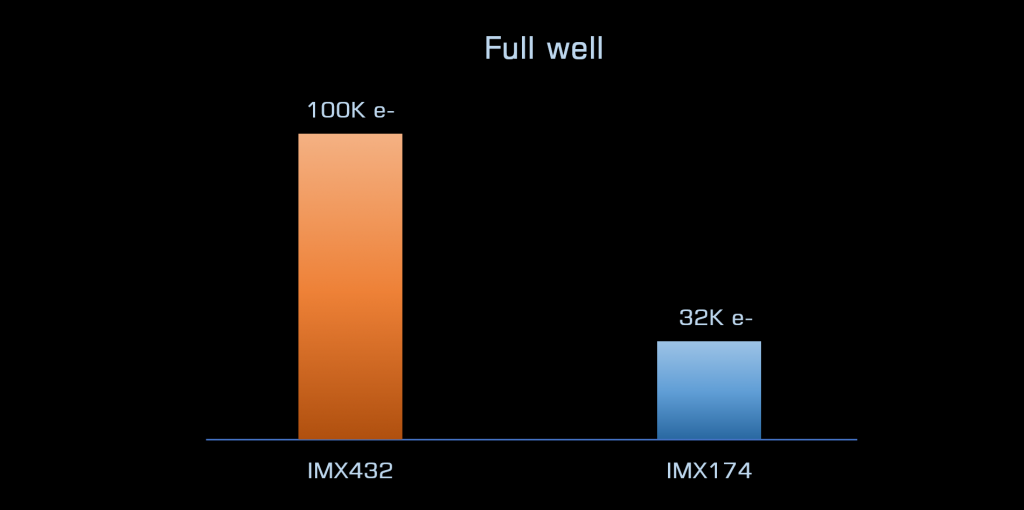
HCG and noise
HCG mode will open automatically when the gain is >145, the read noise will drop to 4.6e. And the dynamic range will increase to 12 drops again.
With a gain of 380, the read noise of the Apollo-M MAX (IMX432) camera is 2.6e, lower than that of the IMX174. And the full well will still be higher than that of the IMX174.
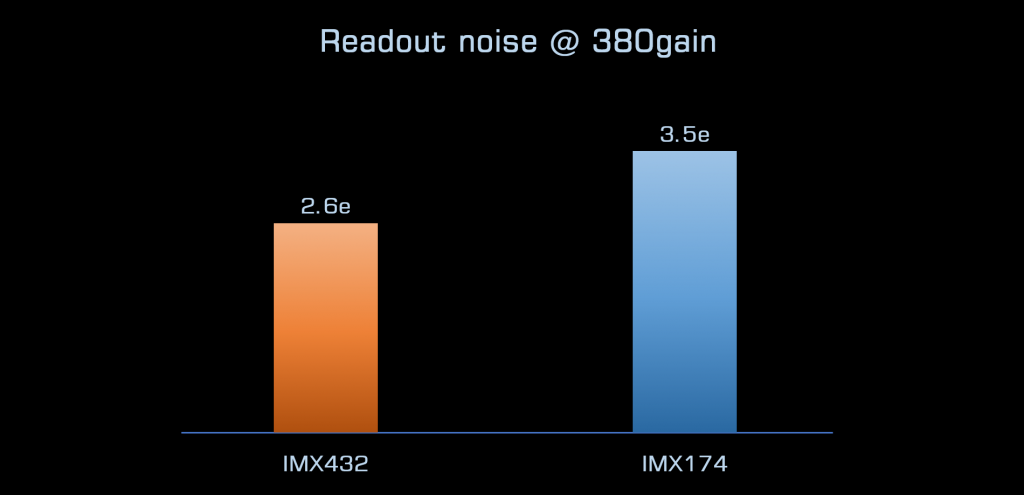
No bands
The problem of row noise is a major problem in solar imaging. When we use IMX174 or IMX178 cameras, banding sometimes occurs. Although we can reduce it in post-processing, it still negatively affects details.
The biggest surprise when testing the Apollo-M MAX is that the IMX432 images are very smooth, with no annoying horizontal banding. Therefore, we can focus on capturing details at any focal ratio, in any way (full disk mosaic or ROI), without having to worry about the banding problem in post-processing.
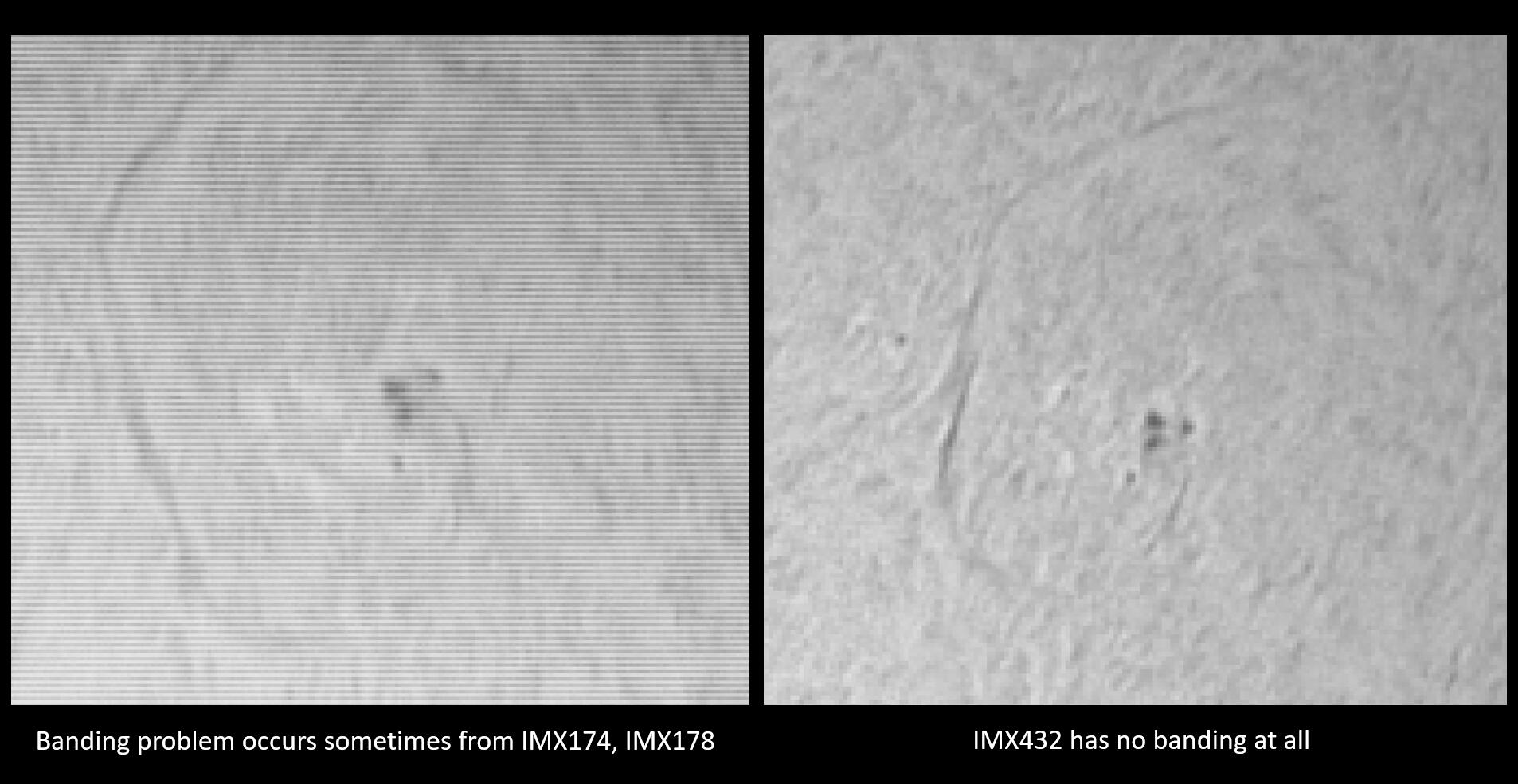
RECOMMENDED ACCESSORIES:
ACS (Active Cooling System) -- IS AN OPTIONAL ACCESSORY THAT MUST BE PURCHASED SEPARATELY
The ACS is an external air cooling system designed for large format solar and planetary chambers that already have PCS (Passive Cooling System). ACS can provide much better temperature control. When the chamber has PCS + ACS, the temperature is only 7℃ higher than ambient, the chamber body is a little warm but not hot. ACS can not only be used in daylight for solar imaging, but also can be used at night for lucky DSO imaging.
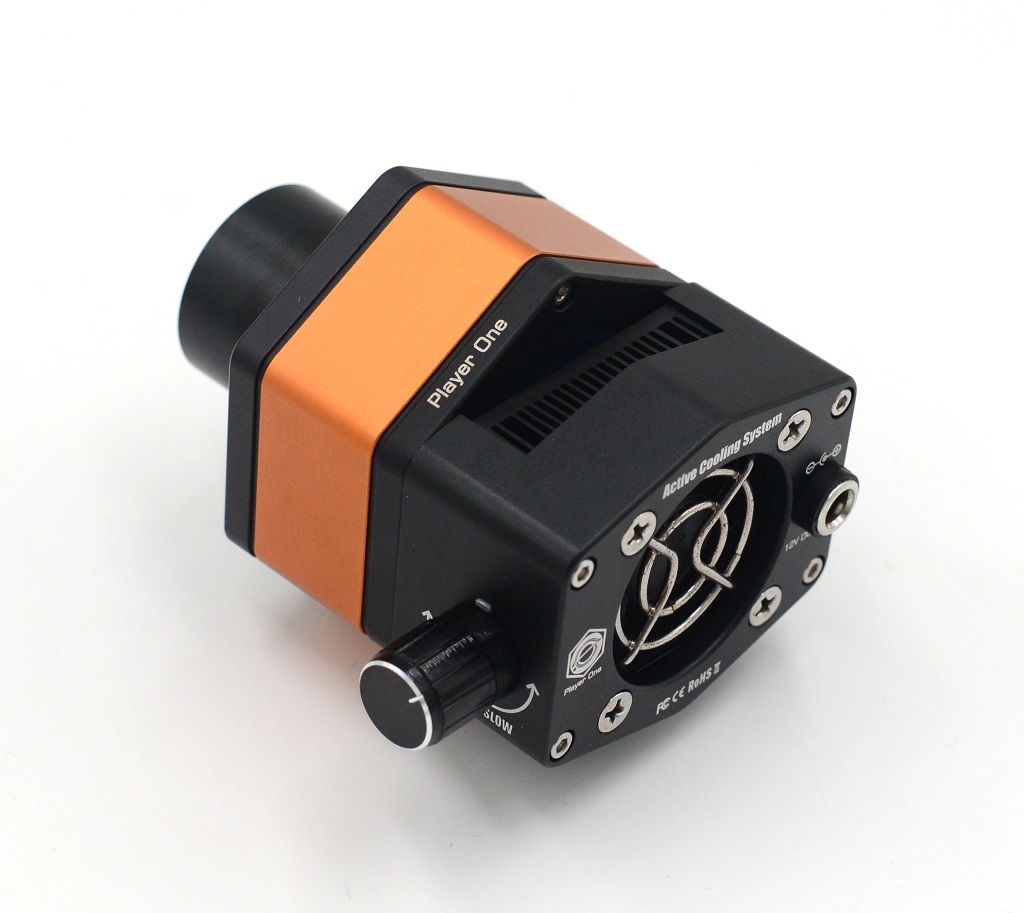
Reference images from various users:
The Sun in white light
For better contrast, the filter Player One Photosphere 10nm will be a good choice. This is an optional filter which must be purchased separately but we highly recommend its acquisition from Telescopiomania.
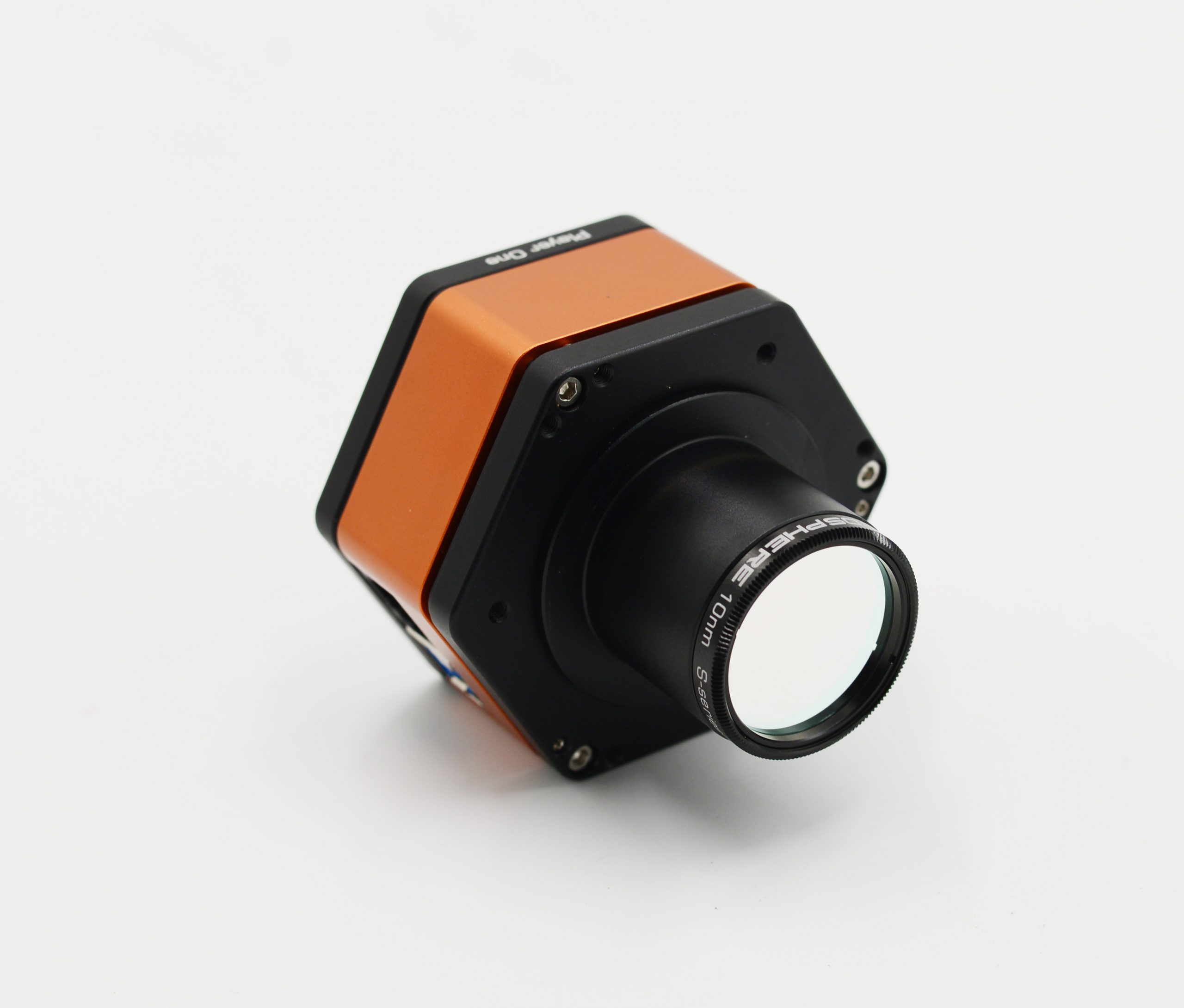
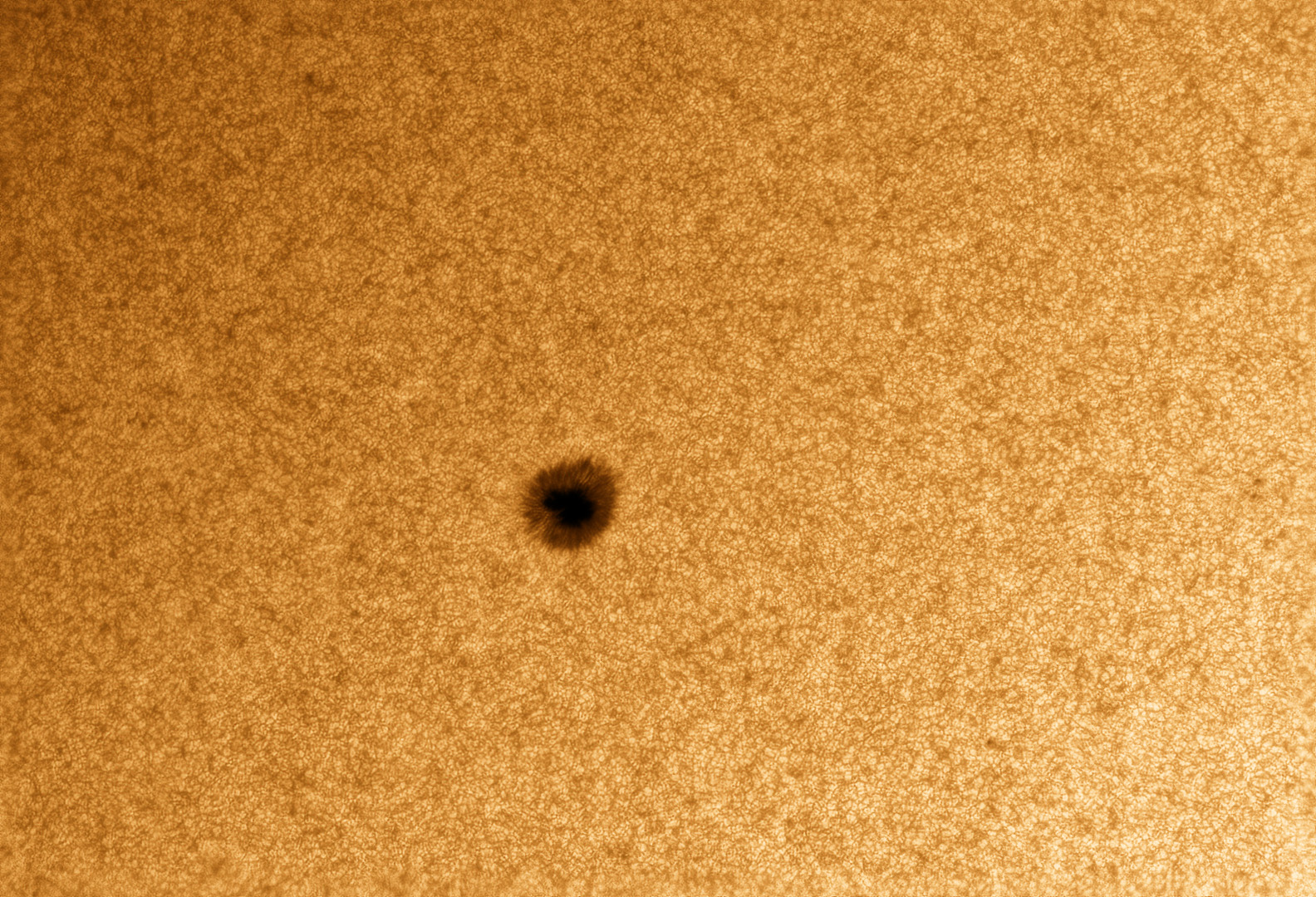
Apollo-M MAX with telescope Skywatcher APO 150. Author: Simon
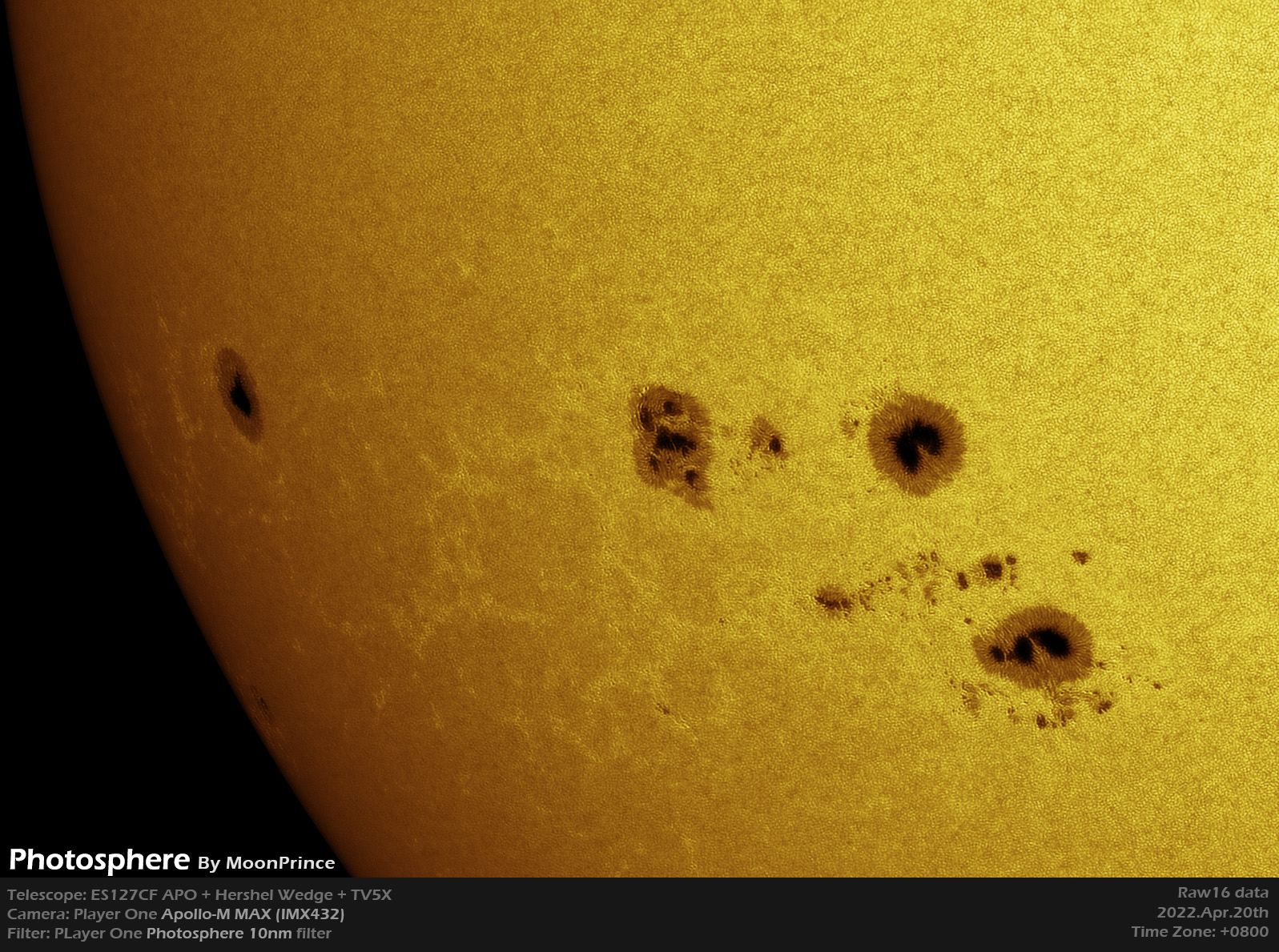

Characteristics:
The designation of the chambers Player One Astronomy is unique. The solar camera line is named after Apollo, the sun god. The suffix of the name describes the major feature of the camera.
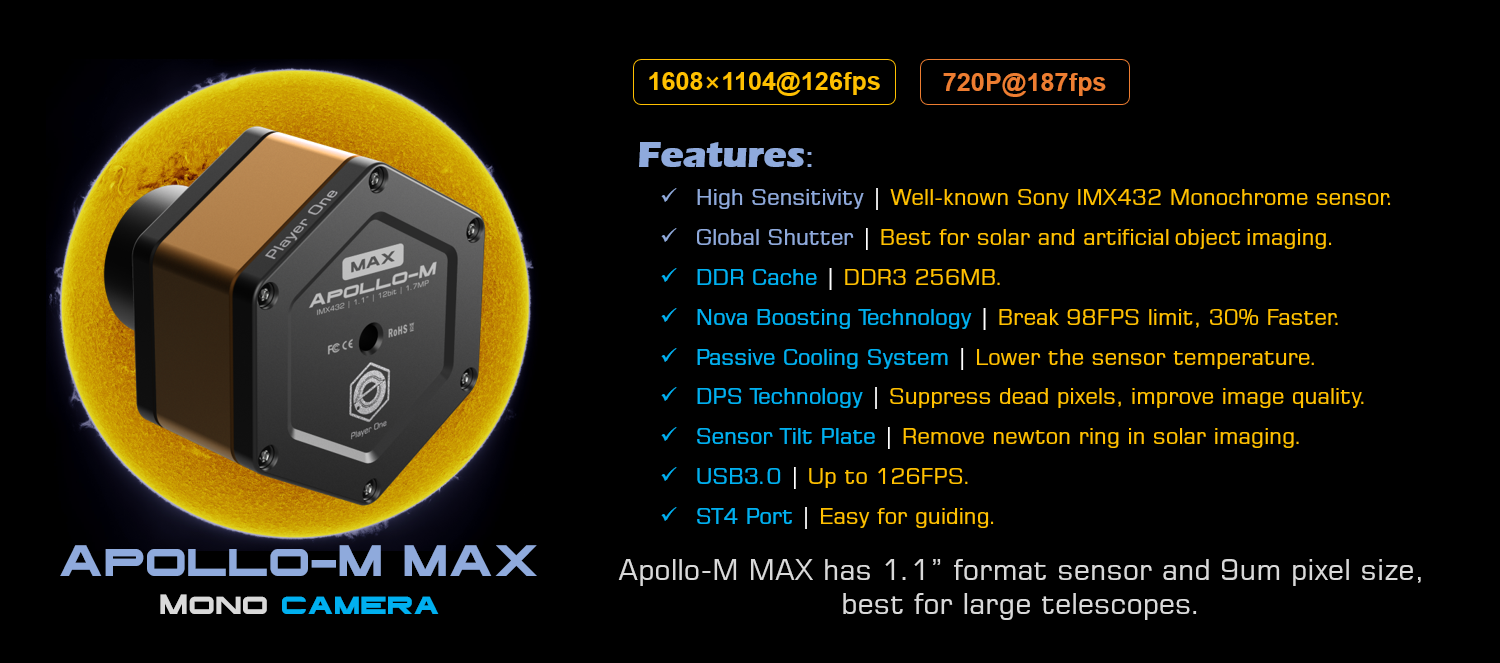
Avant-garde design
The planetary cameras developed by Player One Astronomy use a scientific and technological regular hexagon to build the main body line, complemented by round chamfers to achieve both rigidity and flexibility. The positive orange, which is implicitly solar, is paired with the low-profile and stable black, and the superfine glazing process on the entire surface makes the camera look luxurious and cool.
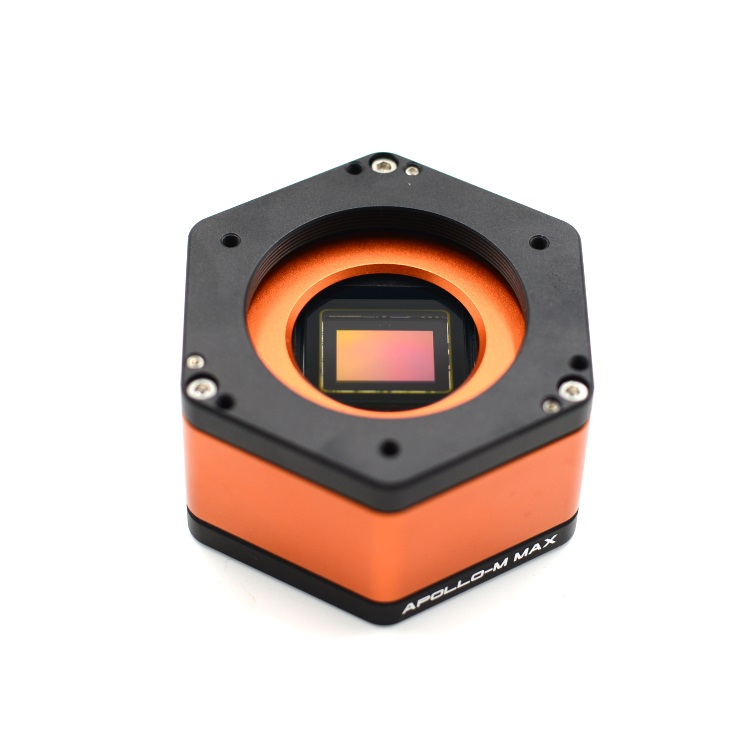
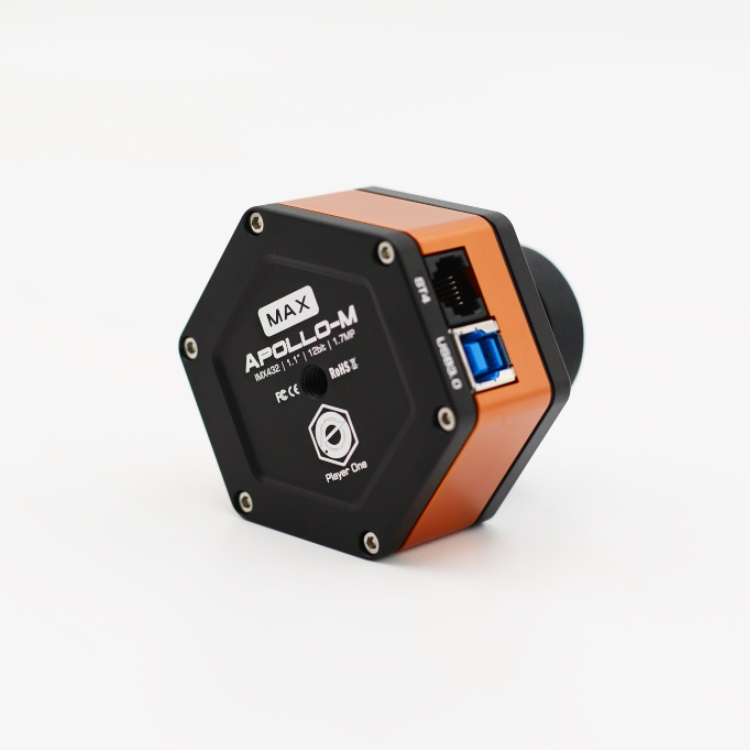
2nd generation - Sensor tilt plate
When taking solar photography with the prominence telescope, the Newton ring is annoying. A smoother solar image can be taken without Newton ring by adjusting the focal plate. Obtain a much smaller telescope field curvature
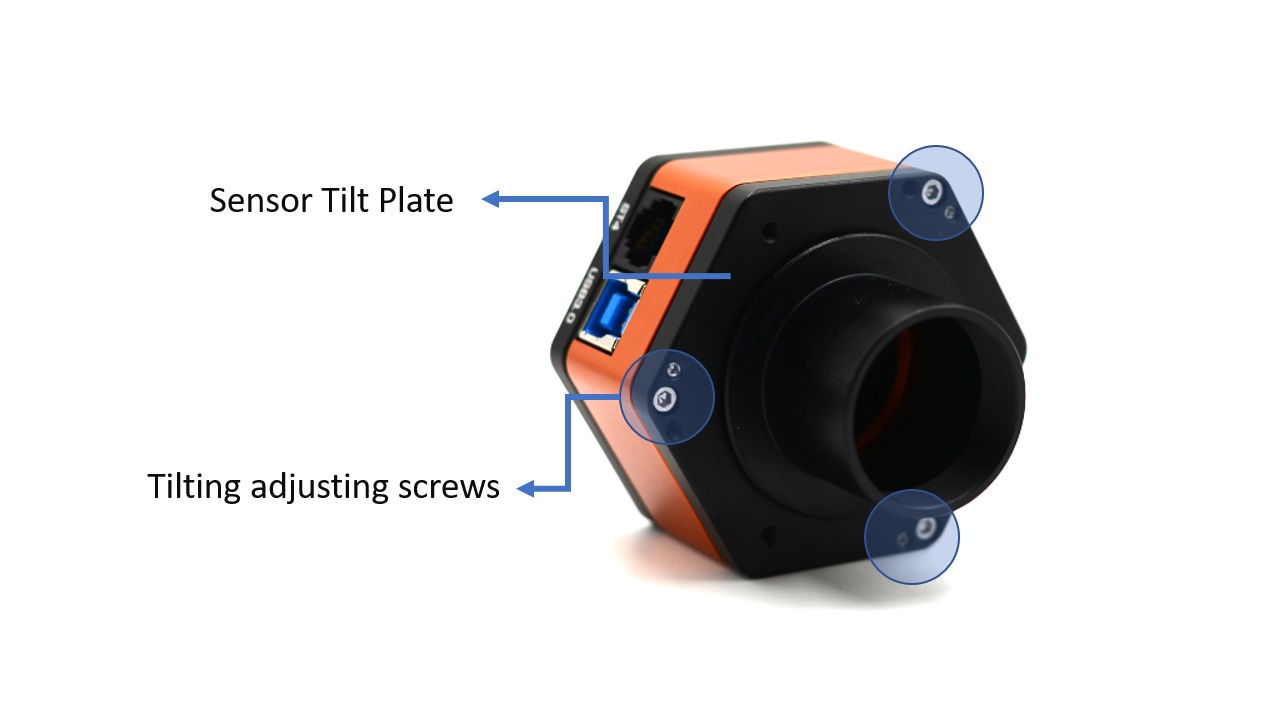
The built-in high-density sponge shading pad can block the light from the side slits without any side leakage.


Passive cooling system
Solar cameras working in daylight, the temperature could be much higher than at night. Heat from global shutter sensors will be a problem, especially in some large formats like the IMX432. Player One has added a new feature called Passive Cooling System to conduct heat from the sensor out.

256M DDR3 Cache
The cameras Player One Astronomy are the first to incorporate DDR3 cache in all planetary cameras worldwide. It helps stabilize and secure data transmission, effectively prevents dropped frames and greatly reduces read noise.
With the DDR3 cache, the camera no longer has high demands on computing needs, it will still have excellent performance even when connected to a USB 2.0 port.
DPS Technology
The planetary chambers of Player One Astronomy feature DPS (Dead Pixel Suppression) technology. DPS analyzes many dark frames to discover fixed abnormal pixels and records the map in the camera's memory. In imaging, in each exposure frame, the position of dead pixels is given an average value depending on the active pixels around that abnormal pixel.

Overvoltage and overcurrent protection mechanism
Player One cameras produced by number one ensure the safety of your camera and other equipment through overvoltage and overcurrent protection mechanisms.
Data port
When the camera is connected to USB3.0 interface and full resolution preview is used, it can achieve 109FPS in 12bit (RAW16) mode and 126FPS 10bit(RAW8). When recording images, since the actual writing speed will be affected by the writing speed of the hard disk itself, when the writing speed of the hard disk is slow, the recording may not reach the theoretical speed. It is recommended to use a high quality solid state drive for data recording in order to take full advantage of the camera's performance.
Use the ST4 guide cable to connect the camera and the AUTO GUIDE port of the equatorial mount for guiding.

PERFORMANCE:

Reading noise
As for the read noise, we solemnly promise that all values are obtained from real tests. And for users, Sharpcap 4 can be used for testing. SC4 has a feature called Sensor Analysis, which provides a very simple way to test read noise.
After many rigorous read noise tests, this camera can achieve a low read noise of 2.6e with a gain of 380.
If you are interested in read noise testing, you can try it yourself, which is very simple.
Quantum efficiency curve:

HCG mode
The Apollo-M MAX camera has a unique HCG mode, which will automatically activate when the camera gain setting is >145. The HCG mode can greatly reduce read noise and maintain the same high dynamic range as the low gain.
Mechanical design

What is included in the box?

Technical specifications:
- Sensor: SONY IMX432 1.1" CMOS (mono)
- Diagonal: 17.5mm
- Total pixels: 1.7 Megapixels
- Maximum resolution: 1608×1104
- Pixel size: 9μm
- Chip size: 14,5mm×9,9mm
- Frame rate: 126FPS(12bit)
- Shutter: Global shutter
- Exposure range: 32μs-2000s
- Noise reading: 22.9e~2.6e
- Peak QE: ≈79%
- Complete well: 100k e
- ADC: 12 bits
- Data port: USB3.0/USB2.0
- Adapter: 1,25″ / M42X0,75
- Rear focal length: 12.5mm
- Protective window: D32*2MM High-quality AR Plus multilayer coating (anti-reflective)
- Diameter: 66mm
- Weight: 160g
- Resolution and FPS:
- In USB3.0 mode
- 12bit ADC resolution
- 1608×1104 126FPS
- More resolution options can be configured in the capture programs.
PLAYER ONE Apollo-M Max Solar Camera USB3.0 Mono Camera (IMX432)

















